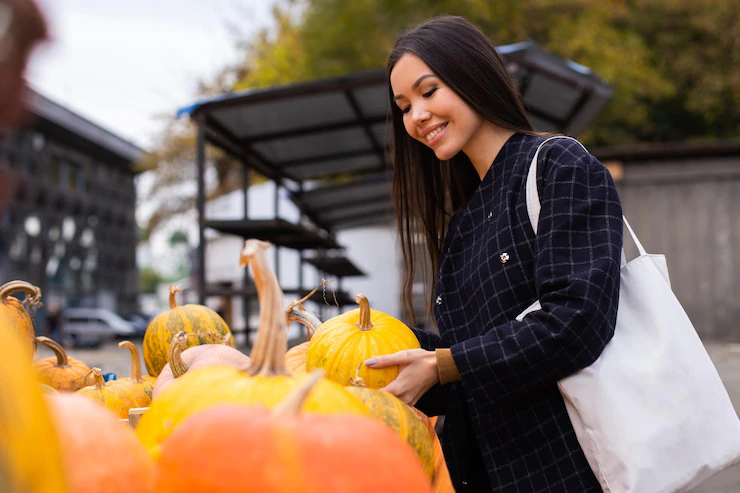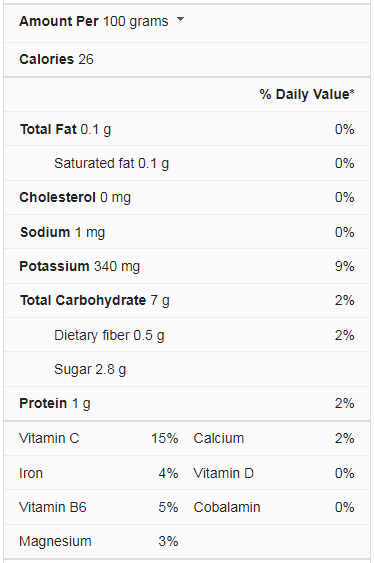Pumpkin is a popular fall ingredient, but you might be wondering if it’s healthy. Pumpkin is nutrient-dense and low in calories, and it’s also more adaptable than you might think, and it can be used to make both savory and sweet dishes. One hundred grams of pumpkin contains 26 calories, 1 gram of protein, 7 grams of carbohydrates, and 0.1 grams of saturated fat. Pumpkin is high in vitamins A and C and potassium and phosphorus. The USDA has provided the following nutritional information.
Pumpkin (Cucurbita pepo or Cucurbita maxima) is a native North American squash variety. While many of us have a go-to pumpkin pie recipe for the holidays, pumpkin’s high nutritional content makes it a portion of healthy food to eat all year in sweet and savory dishes.
Pumpkin Nutrition Facts
What Is Pumpkin?
Pumpkins belong to the same plant family as cucumbers and melons, and they are a type of winter squash. Because it contains seeds, it is classified as a fruit. In terms of nutrition, however, it’s closer to a vegetable. Pumpkins are typically round and orange in color, though size, shape, and color can vary depending on the variety.
They have a smooth, ribbed outer rind and a stem that connects the pumpkin to its leafy plant. Except for ivory-colored seeds coated in stringy flesh, they’re hollow inside. These squash are native to North America and play an essential role in two different holidays. In the United States and Canada, they are carved into jack-o’-lanterns for Halloween and cooked into pies for Thanksgiving dessert. They are, however, grown all over the world, except in Antarctica.
Pumpkin Varieties
There are many varieties of pumpkins, including:
- Jack-o’-lantern: a large variety that’s used for carving.
- Pie pumpkins: a smaller, sweeter variety.
- Miniature: used for decoration but also edible.
- White: used for decoration but can be cooked.
- Giant: mostly grown for contests; technically edible but less flavorful than more miniature pumpkins.
How to Select Pumpkin?
You might think of giant orange pumpkins from a pumpkin patch when you hear the word pumpkin. They’re great for carving and decorating your front porch, but you won’t want to eat them. Look for more miniature pumpkins labeled “sugar” or “pie” at the grocery store or farmers market. They’re not as big as carving pumpkins and have a sweeter flavor.
Choose a pumpkin free of soft spots or bruises, as these indicate rotting. “Look for a dried-out stem [and avoid it] when choosing the right pumpkin, so you know it won’t fall off or start to rot.” Pumpkin puree can also be found in the grocery store. Pure pumpkin puree will provide the health benefits of pumpkin, but read the label carefully before purchasing.
What Are the Benefits of Eating Pumpkin?
Vitamins and minerals and low sugar and high fiber content account for most of a pumpkin’s health benefits. While there aren’t many studies on the pumpkin, it’s high in several nutrients that have been shown to have health benefits.
Immunity
Beta carotene, which is partially converted into vitamin A, is abundant in pumpkin. Vitamin A can aid in the fight against infection. According to the same study, Vitamin A appears to be particularly important for strengthening the intestinal lining and making it more resistant to infections. Vitamin C is also important for immune health because it strengthens immune cells that respond when a pathogen is detected.
Eye Health
Pumpkin is beneficial to your eyes in several ways. For starters, it’s high in beta carotene, which aids in the sharpening of your vision by assisting the retina in absorbing light. Second, the pumpkin’s combination of vitamins and minerals may help to prevent age-related macular degeneration.
One study found that taking zinc, vitamin C, vitamin E, beta carotene, or a combination of these supplements could slow the progression of age-related macular degeneration. While that study used a supplement, pumpkin contains all these nutrients, albeit in smaller quantities.
Skin Health
Pumpkin is high in antioxidants, which are beneficial to skin health. Beta carotene, as well as vitamins C and E, are among them. Beta carotene, in particular, may protect your skin from the sun’s ultraviolet (UV) rays, which can cause skin damage. Beta carotene-rich foods may also help improve the appearance and texture of your skin. Antioxidant properties are also found in vitamins C and E. They’re commonly found in skincare products, but they may also benefit skin health when consumed. However, more human research is required.
Heart health
Fruits and vegetables are good for your heart, and Pumpkin also contains specific nutrients beneficial to heart health. Potassium, in particular, may aid in the reduction of high blood pressure.
Fiber can also help lower blood cholesterol levels by binding to cholesterol in your foods and preventing them from being absorbed.
Metabolic Health
Eating foods high in beta carotene, like pumpkin, can help you improve your metabolic health, which refers to how well your blood sugar is managed and how fat is distributed in your body. Pumpkin is also high in fiber, which can help to reduce blood sugar spikes after eating carbohydrates. However, your overall dietary pattern is far more critical than simply eating pumpkin now and then.
What Are the Common Ways to Eat Pumpkin?
Pumpkin is commonly used in desserts such as pancakes, pies, custards, and muffins, but it can also be used in savory dishes. It can be used to make a soup or roasted with other vegetables. A creamy curry base can be made with canned pumpkin, coconut milk, and spices. Other parts of the pumpkin plant can also be eaten.
Its seeds are roasted and used as a crunchy snack or salad topping, and its flowers are frequently battered and fried. However, don’t bother with the jack-o’-lantern. Giant carving pumpkins have a stringy texture and are not as flavorful as pie pumpkins. You also don’t want to eat something that has been cut open and sit around for food safety reasons.
Can We Eat Pumpkin Every Day?
Many people only eat pumpkin in the fall, when it becomes a popular seasonal flavor in almost every drink, cereal, and baked good. There are, however, many reasons to eat this fruit all year. Pumpkins are high in nutrients and can help you live a healthier life if you eat them regularly. Pumpkin is “basically a superfood,” according to Women’s Health because it is low in calories and fat while high in vitamins, minerals, and other nutrients. You get a lot of vitamin A, vitamin C, zinc, and magnesium when you eat pumpkin.
In addition, pumpkin has both soluble and insoluble fiber. Soluble fiber reduces your risk of heart disease by absorbing “bad” LDL cholesterol. Insoluble fiber helps to keep your digestive system in good shape. Pumpkin’s potassium, fiber, and vitamin C can help you maintain a healthy blood pressure level. Pumpkin is a great way to promote gut health and a strong heart by eating it daily.
Side Effects of Pumpkin
Here are a few side effects also of eating pumpkin.
When Taken by Mouth: Pumpkin is likely safe when eaten in foods, and it is possibly safe to take pumpkin seed or pumpkin seed oil in medicinal amounts. Side effects from pumpkin products are rare but might include stomach discomfort, diarrhea, and nausea.
When Applied to the Skin: There isn’t enough reliable information to know if pumpkin seed oil is safe or what the side effects might be.
Conclusion
In the fall, pumpkins are everywhere, and they’re also a healthy addition to your meals. Pumpkin is high in vitamin A, vitamin C, and potassium, with fiber and magnesium in the seeds. Roasted or pureed, it’s in stews and baked goods. Keep an eye out for pumpkin spice treats, often overly sweetened and lacking in real pumpkin.
Pumpkin is a nutrient-dense vegetable high in fiber, vitamins, and minerals, and it’s a versatile ingredient used in both sweet and savory dishes. The seeds are also a nutritious snack or salad topping high in plant-based fat. To get the most benefits from pumpkin, eat it as a vegetable rather than a dessert.
https://youtu.be/dKuS_pG0_Iw



